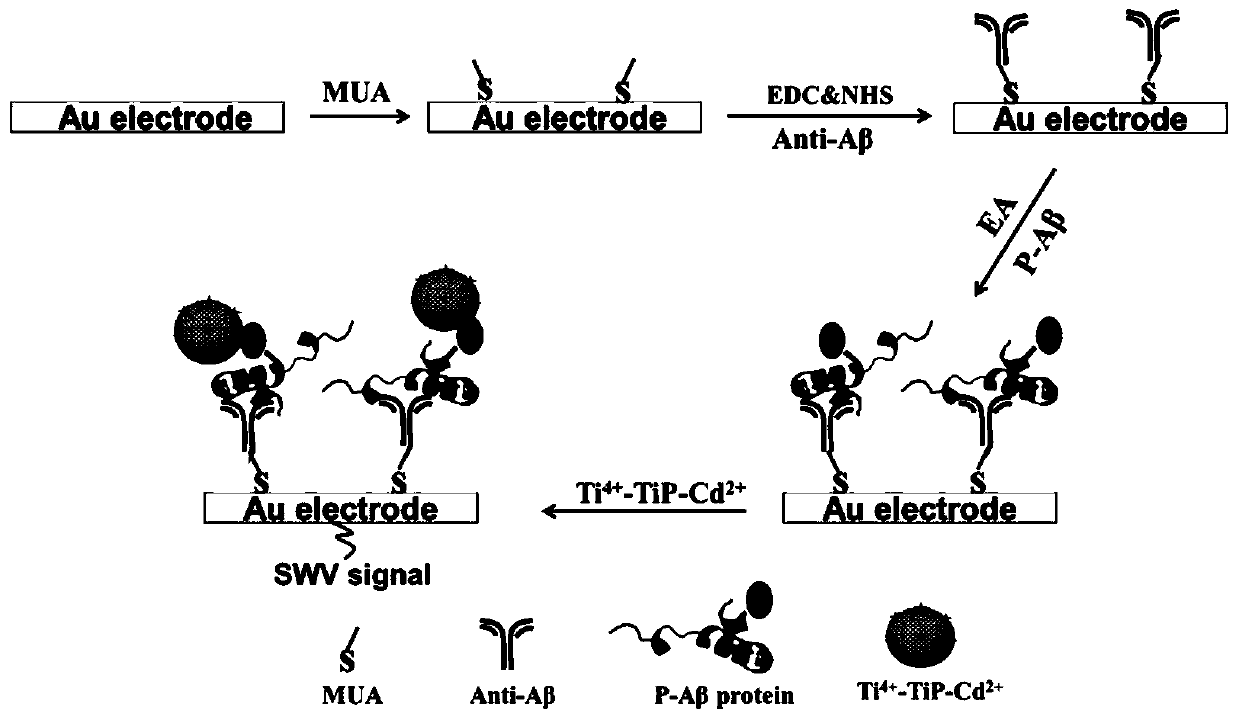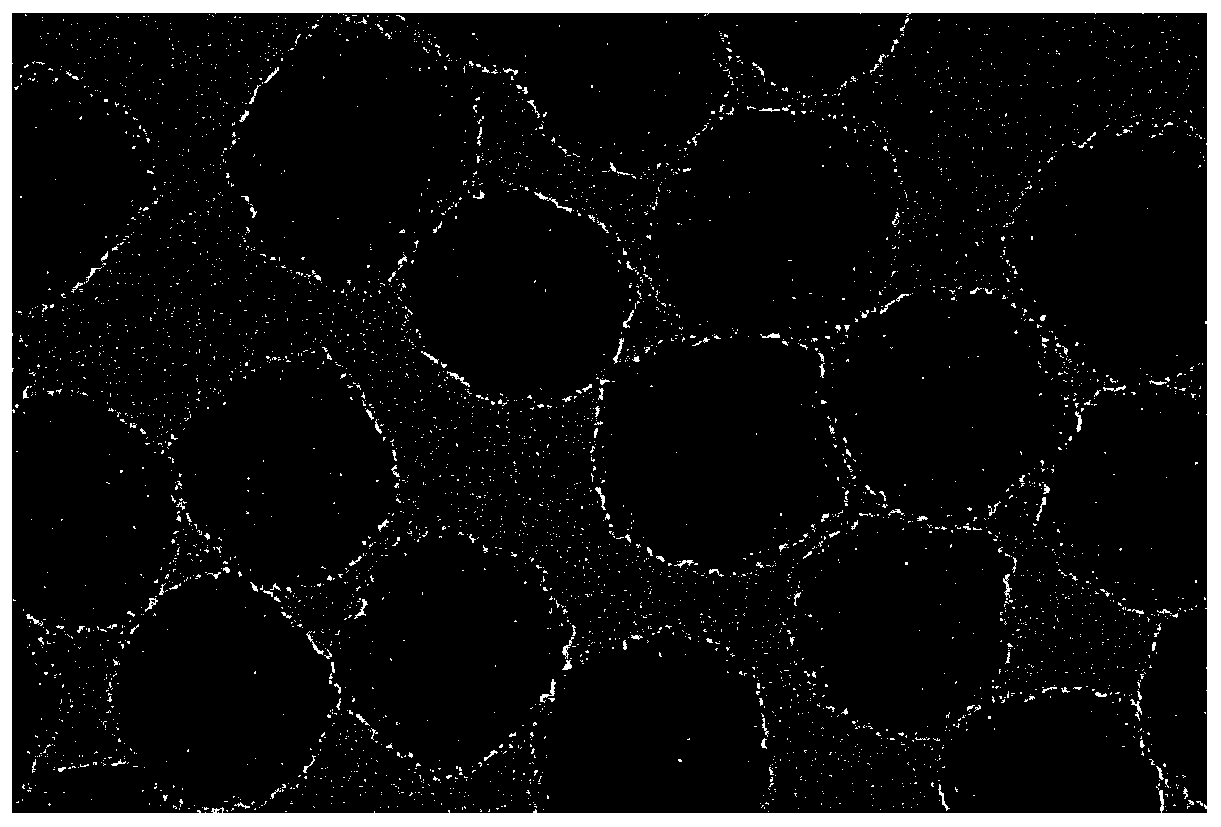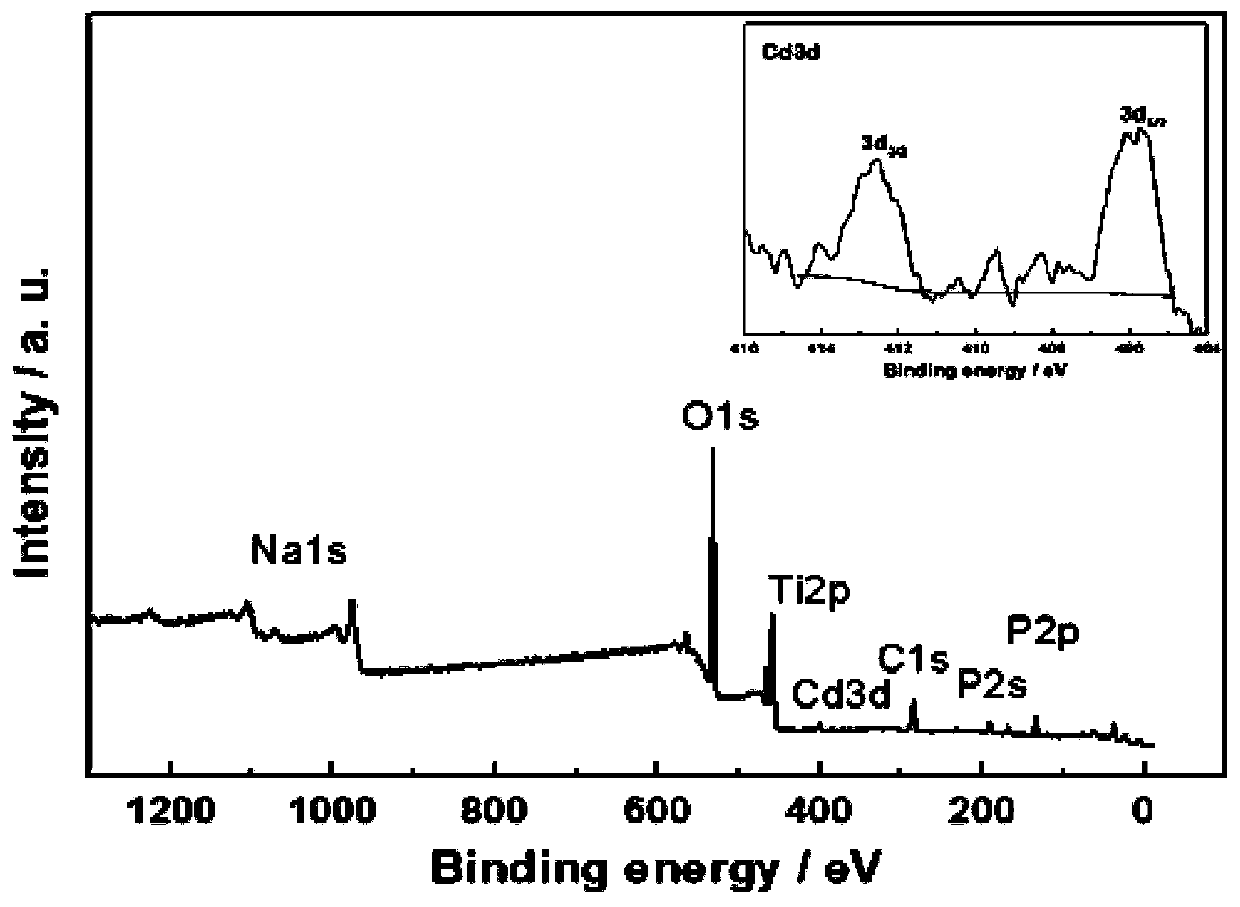A biosensor for electrochemical detection of phosphorylated β-amyloid protein and its construction method
A technology of amyloid protein and biosensor, applied in the field of biosensing, can solve the problems of increased detection cost and reduced sensitivity, and achieve the effect of low detection limit, high sensitivity and simple detection process
- Summary
- Abstract
- Description
- Claims
- Application Information
AI Technical Summary
Problems solved by technology
Method used
Image
Examples
Embodiment 1
[0044] (1) Ti 4+ -TiP-Cd 2+ Preparation of Signaling Probe Nanoparticles
[0045] First, 2.5 g of docusate sodium salt (AOT) was dissolved in 16 mL of ethanol, and then 3 mL of H 3 PO 4 A cloudy solution was obtained and the precipitate was removed. Then, a mixture of tetrabutyl titanate (TBOT) and ethanol (0.875g / 12.5g) was quickly dropped into the AOT / ethanol solution, and a stable mixed solution was obtained by ultrasonic waves. The mixture was condensed and refluxed at 80° C. and stirred for 2 h. The solid product was washed several times with ethanol and deionized water and then dried to obtain TiP nanoparticles; 0.5mL TiP nanospheres (40mg / mL) were dispersed in 15mL of 10mMCd(NO 3 ) 2 React in the solution for 4-6 hours to obtain TiP-Cd 2+ nanoparticles; then TiP-Cd 2+ nanoparticles with 10mM Ti(SO 4 ) 2 The solution was reacted for 1 hour to obtain Ti with a uniform particle size and an average particle size of about 50 nm. 4+ -TiP-Cd 2+ Signaling probe nano...
PUM
| Property | Measurement | Unit |
|---|---|---|
| particle diameter | aaaaa | aaaaa |
Abstract
Description
Claims
Application Information
 Login to View More
Login to View More - R&D
- Intellectual Property
- Life Sciences
- Materials
- Tech Scout
- Unparalleled Data Quality
- Higher Quality Content
- 60% Fewer Hallucinations
Browse by: Latest US Patents, China's latest patents, Technical Efficacy Thesaurus, Application Domain, Technology Topic, Popular Technical Reports.
© 2025 PatSnap. All rights reserved.Legal|Privacy policy|Modern Slavery Act Transparency Statement|Sitemap|About US| Contact US: help@patsnap.com



